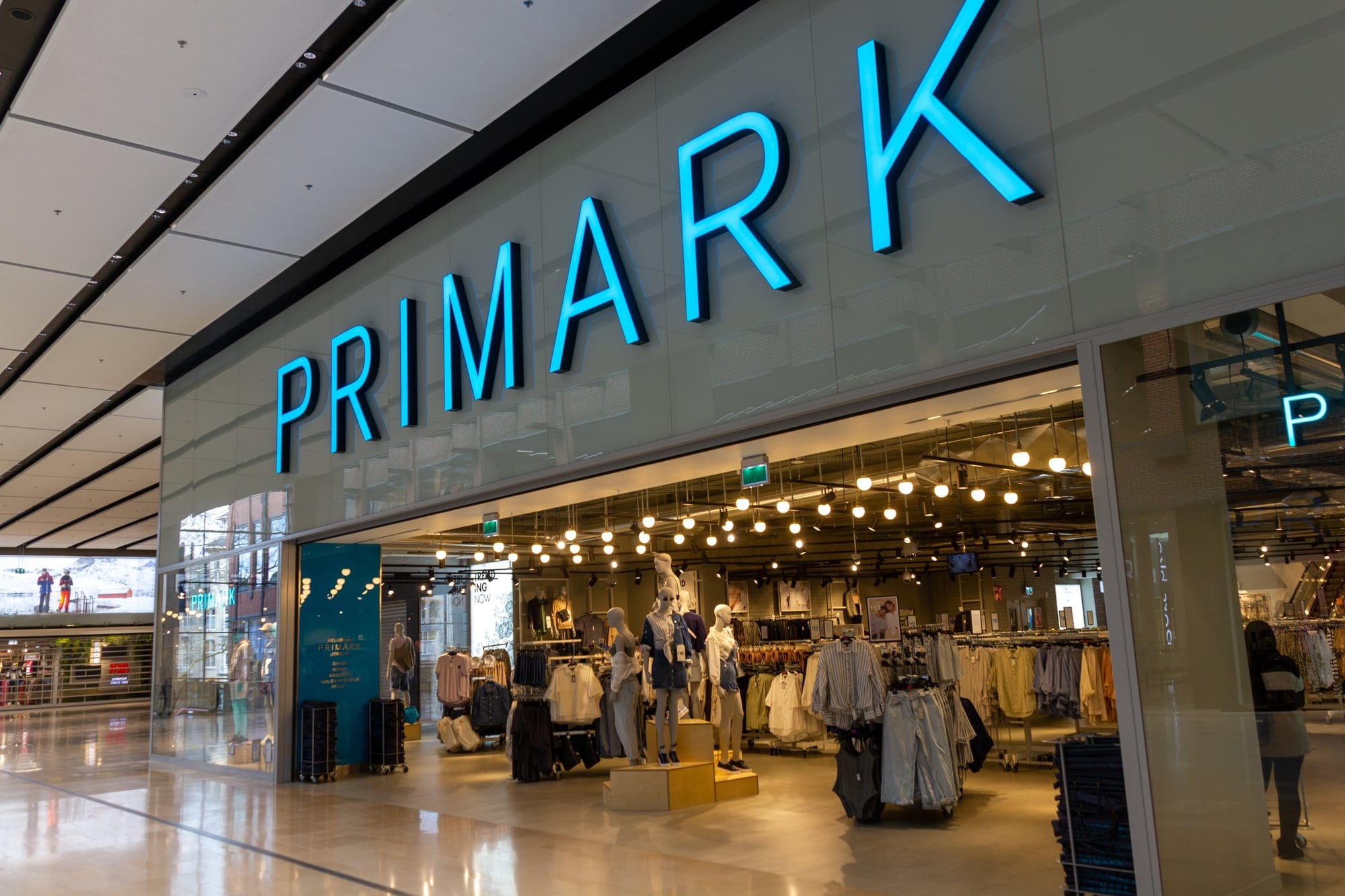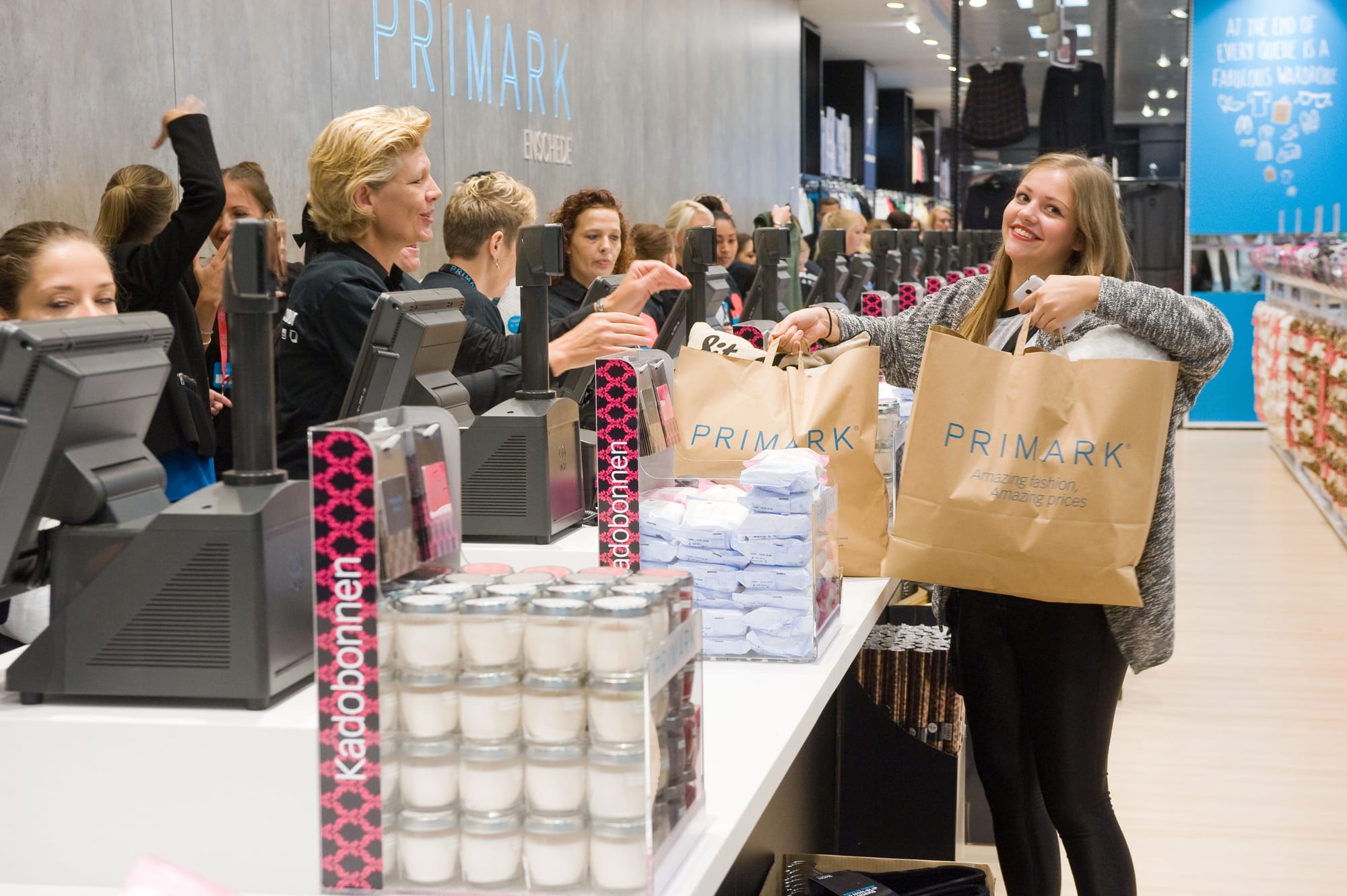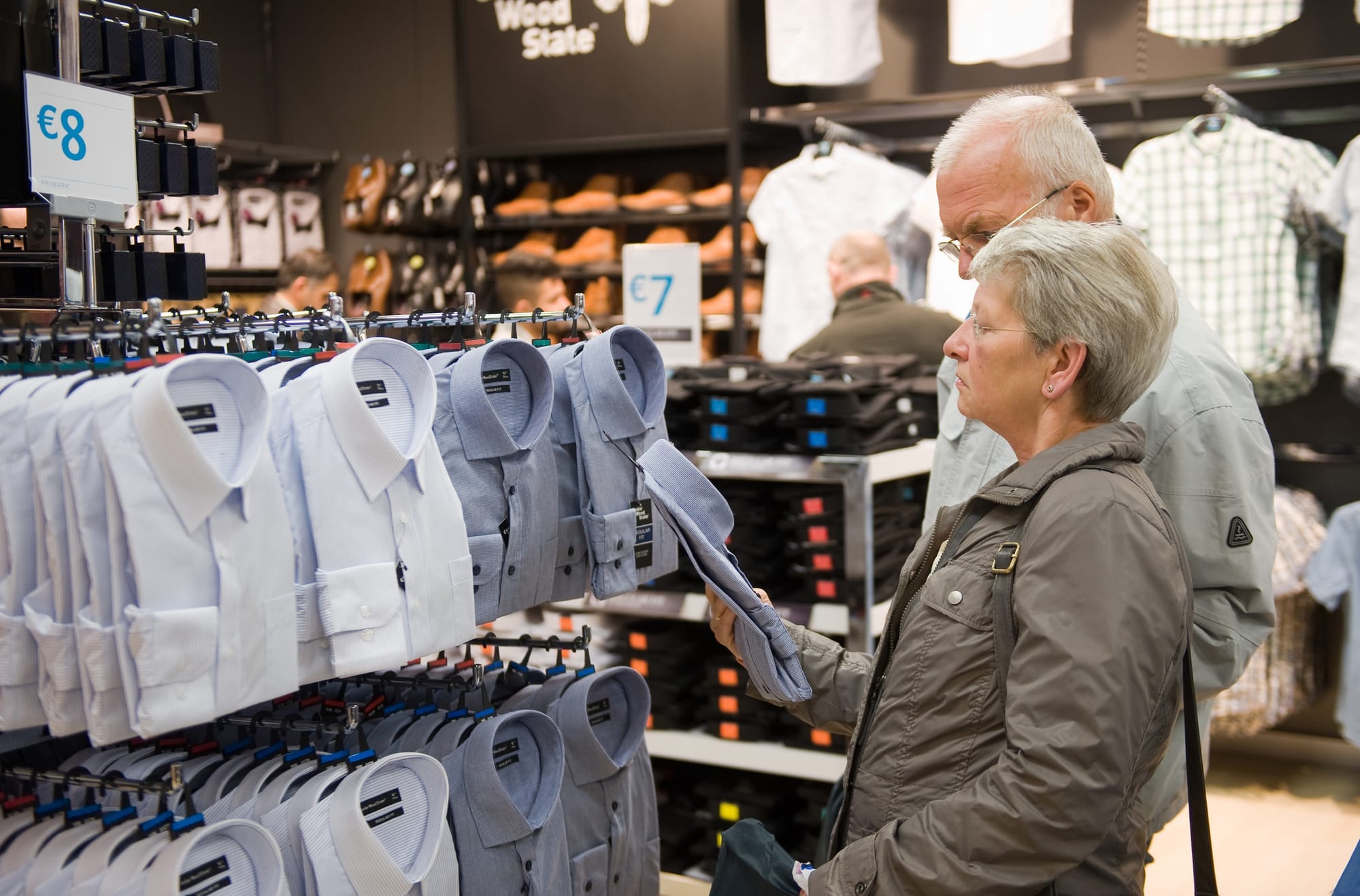Primark, originally known as "Penneys" when it emerged from Ireland in 1969, has transformed into a global fashion sensation, enchanting fashion enthusiasts in 16 European and American nations. With a diverse team of over 72,000 members who share a unified vision, Primark's mission is clear: to make high-quality, trendy clothing accessible to everyone.
At the heart of Primark's philosophy is the commitment to provide a wide range of wardrobe essentials, stylish fashion for all age groups, an alluring selection of beauty products, homeware, and accessories. But it's not just about the products; it's about crafting unforgettable in-store experiences. Operating a vast network of over 420 stores worldwide, Primark is dedicated to creating dazzling shopping moments.

However, the story doesn't end there. Primark's hunger for growth is insatiable. Their audacious goal is to unveil an impressive 530 stores by 2026, with their latest venture leading them to Hungary, a dynamic new market.
To better understand Primark's position in the fashion world, we invite you to explore our comprehensive Primark PESTLE analysis of external factors. Furthermore, for insights into both internal and external factors, we are currently conducting a Primark SWOT analysis, offering an in-depth look into the powerhouse that is Primark.
Strengths of Primark
Huge Worldwide Footprint
Primark established a vast network of over 420 stores in 16 countries, including the United States, the United Kingdom, and, more recently, Eastern Europe Primark is a well-known global retail brand in the European clothing sector. This broad reach increases brand awareness and acts as a vital stimulant for income diversification, lowering dependence on particular countries and permitting the pursuit of international expansion prospects in the ever-changing European clothing industry.
Efficient Supplier Network
Primark's efficient supplier network, primarily in Asia, underpins its strength. This extensive, responsive supply chain ensures a steady stream of affordable, stylish clothing. It allows Primark to adapt to market changes swiftly, control production costs, and maintain its commitment to quality and affordability. This well-established supplier ecosystem enhances the brand's competitiveness and value to customers.
Brick-and-Mortar Model
Despite not being in the online market, Primark generated an impressive revenue of £9.56 billion in 2023. This shows how successful the company's management is. Yet, online retail comes with significant costs; establishing logistics hubs and local distribution centers adds extra layers of expenses, impacting retailers' already slim margins. The real challenge in e-commerce is managing returns, which can turn a profitable brand into a loss-making one. Thus, for businesses in fast fashion, such as Primark, relying on a brick-and-mortar model proves beneficial for cost management and maintaining profitability.
Vast and Diverse Product Range
Primark has a competitive advantage over other stores thanks to its extensive product ranges, which include apparel for every age and gender as well as accessories, gadgets, home items, travel gear, and cosmetics. This extensive range of goods caters to a vast array of customer demands and tastes. It enables Primark to capture a significant share of consumer spending, making the brand highly competitive in the retail market. This versatility also enhances Primark's adaptability to evolving market demands and consumer preferences, solidifying its position in the dynamic retail industry.
Industry Leadership in Sustainability Initiatives
Primark has shown leadership in advancing moral and environmental standards in the fashion sector by actively participating in industry-wide alliances and projects, including the Sustainable Apparel Coalition, Greenpeace's Detox Campaign, and the ACT initiative on wages. A further indication of the company's commitment to these ideals is its membership in the Ethical Trading Initiative and continuous top-level "leadership" status.
Adaptive Expansion
Primark's flexibility in adapting store locations is a strength. In the UK, it operates standalone stores in high-traffic areas, reflecting the local preference for shopping districts. In the US, it chooses mall locations, aligning with the American mall culture. This adaptability showcases Primark's ability to cater to the unique retail landscapes in these countries, enhancing its brand appeal and maximizing its reach in both markets.
Associated British Foods (ABF) Backing
Primark gains a substantial competitive edge in the market with the strong backing of its parent company, Associated British Foods (ABF). This support empowers Primark to weather economic fluctuations and challenges effectively. A notable example is how ABF's resources helped Primark navigate and recover from supply chain disruptions during the global pandemic, showcasing the strength of this partnership.

Weaknesses of Primark
Minimal Online Presence
Primark's limited online presence, evident in a £2 billion revenue drop during the COVID-19 pandemic, is a significant internal weakness. This gap in digital retail capabilities makes the company vulnerable to unforeseen market disruptions and hinders its ability to adapt to changing business landscapes. To bolster resilience and competitiveness, Primark must prioritize and invest in strengthening its online infrastructure.
Absence in Asia, Africa, and in South America
Primark's absence in South America, Asia, and Africa is a serious vulnerability that puts it in danger of oversaturation and competitive disadvantages while restricting its access to profitable markets, income diversification, and worldwide brand awareness. Primark's competitive status would improve, and these disadvantages might be addressed by expanding into these locations.
Fast-Fashion Influence
Primark's fast fashion approach can result in lower product quality and durability, foster a throwaway culture, exacerbate environmental impacts through increased textile waste, and pose reputation and sustainability challenges. To address these issues and appeal to environmentally and socially conscious consumers, Primark may need to adopt more sustainable practices and prioritize ethical sourcing.
Europe Centric Presence
Despite international expansion, Primark's heavy concentration of stores in Europe represents a potential weakness. Overreliance on the European market makes the company susceptible to regional economic fluctuations and shifts in consumer preferences. Diversifying its global presence could help mitigate these risks, ensuring a more stable and resilient market position.
Dependency on Region-Centric Suppliers
A major weakness for Primark is the extent of its reliance on suppliers, who make up over 50% of its supplier network and are mostly situated in China. This concentration increases the possibility of supply chain interruptions, inadequate quality control, and moral dilemmas related to labor standards, all of which might be detrimental to Primark's reputation as a brand.
Ethical Challenges
On the surface, Primark's labor rights rules appear strong, with transparency and audits; nonetheless, there are issues over claims of policy violations in Sri Lanka and criticism for not ensuring a living wage. They were criticized in 2017 for failing to pay the UK minimum wage because of deductions linked to uniforms, which raised questions about their dedication to worker rights.

Opportunities for Primark
Global Expansion
Primark can achieve global expansion, yielding advantages such as market diversification, brand visibility, cost reduction, revenue diversity, competitive edge, supply chain efficiency, regulatory adaptability, margin enhancement, economic resilience, and innovation. This opportunity positions Primark for enduring success and growth in the retail industry.
Omnichannel Expansion
In the UK, the 'Click and Collect' service bridges the gap between online and in-store shopping, making life easier for customers. People collecting online orders often make impulse in-store purchases, creating a seamless shopping experience. By improving and expanding this service, Primark not only merges online and offline channels but also draws in more customers, reduces in-store crowding, and gathers data for better inventory management and marketing.
Virtual Fitting Rooms
Using AR technology, Primark's virtual fitting rooms enhance the shopping experience. They decrease returns, cut down on time spent in changing rooms, and provide insightful data along with personalized suggestions. Effective implementation will require a large investment and addressing privacy concerns.
Eco-Innovation
Primark has a remarkable opportunity to spearhead sustainability in fashion by committing to longer-lasting, recyclable, and recycled clothing, environmental protection, and worker welfare. Their comprehensive approach includes halving carbon emissions, eliminating waste, and promoting biodiversity while championing living wages and gender equality. The Primark Sustainable Cotton Programme serves as a prime example of their dedication to sustainable practices, reducing harmful chemical usage and promoting environmental sustainability, reinforcing their leadership in sustainable fashion.
Leveraging Primark Haul
Primark has the potential to leverage the appeal of "Primark hauls" through partnerships with influencers, marketing user-generated content, and engagement with customers. By consolidating user-generated material into its website, incorporating suggestions for product improvement, and producing official haul content, Primark is able to promote its brand recognition and increase consumer loyalty through sales and marketing campaigns.
Partnership and Sponsorship
Primark's opportunity in strategic collaborations is exemplified by its successful partnerships with designers like Alessandra Rich and popular franchises like Disney. These collaborations have expanded Primark's customer base and enhanced its brand appeal, demonstrating the potential for continued growth through such partnerships.

Threats to Primark
Tough Competition
Primark faces intense competition from industry leaders like Shein, Zara, and other local giants. To thrive, Primark must focus on innovation, unique offerings, and customer satisfaction in the competitive fashion and retail market.
US Market Challenge
The heightened competition in the US market, compared to Europe, poses a substantial threat to Primark. While the US offers a larger consumer base, its retail market is saturated and intensely competitive. To succeed, Primark must adapt to local consumer preferences, navigate varying regulations, compete with established players, optimize logistics, and build brand recognition in a highly competitive landscape. This threat could impact Primark's growth and profitability in the future.
Outsourcing to cut expenses
Primark keeps prices down by outsourcing manufacturing to low-wage nations, but growing living standards there might result in increased labor costs. Pricing and profitability may be impacted, and there may be a chance of supply chain disruption and ethical issues. Primark should promote ethical principles, engage in automation, and diversify its suppliers in order to adapt.
Changing Consumer Preferences
One of the significant threats to Primark is the ever-changing landscape of consumer preferences. While the brand may initially enjoy high demand due to its fashionable designs, it remains vulnerable as consumer tastes evolve. What's in vogue today may become outdated tomorrow, and as people's fashion preferences shift, Primark could experience a decline in popularity, potentially affecting its market share and necessitating constant adaptation to stay relevant in the competitive fashion industry.
Counterfeit Products
The availability of counterfeit Primark products, which are usually of poorer quality, may leave customers unhappy and harm the brand's reputation. Fake products can harm sales and brand credibility since consumers may mistakenly purchase them.
Economic Downturns
Economic downturns present a significant threat to Primark as the company heavily depends on physical retail stores. During economic instability, reduced consumer spending can lead to a drop in foot traffic in these stores, impacting the brand's revenue. Primark's vulnerability underscores the need to explore strategies such as diversification or proactive measures to navigate economic challenges effectively and maintain its competitive edge in the market.

Primark SWOT Analysis: In Conclusion
Primark is a prominent player in the retail industry, boasting a range of strengths that have propelled its success. These include a vast worldwide footprint, an efficient supplier network, a focus on brick-and-mortar operations, a wide and diverse product range, a leadership role in sustainability initiatives, adaptive store location strategies, and robust backing from its parent company, Associated British Foods. These strengths have allowed Primark to establish a significant global presence and navigate various challenges effectively.
But the business also possesses weaknesses. A limited online presence, absence in key markets like Asia, Africa, and South America, adherence to a fast-fashion model, heavy concentration in Europe, and reliance on region-centric suppliers present vulnerabilities that need attention.
To secure its position and achieve growth, Primark has opportunities in global expansion, omnichannel strategies, eco-innovation, user-generated content utilization, and strategic partnerships. Nevertheless, it faces threats from intense competition, challenges in the highly competitive US market, concerns related to outsourcing, changing consumer preferences, counterfeit products, and economic downturns. Primark's ability to address its weaknesses, leverage opportunities, and navigate these threats will determine its ongoing success and competitiveness in the ever-evolving fashion and retail landscape.
We hope you have gained valuable insights. To explore and understand more about various businesses, you can access more examples of SWOT Analysis here and PEST Analysis resources available on our website.









